Shocking New Observation: Merging Black Holes Really Can Emit Light
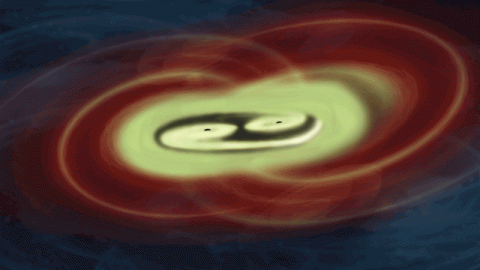
Light cannot escape from a black hole, no matter what. But when two black holes merge? They just might.
On September 14, 2015, history was made as the NSF’s twin LIGO detectors directly observed humanity’s first gravitational wave. From over a billion light-years away, two black holes of 36 and 29 solar masses each merged together, creating the ripples in spacetime that arrived on that fateful day. In an unexpected twist, NASA’s Fermi satellite observed a weak gamma-ray signal from an unidentified location just 0.4 seconds later.
In the subsequent 5 years, LIGO has been upgraded and joined by Virgo, where some ~50 additional black hole-black hole mergers have been seen. In all those events, not a single one emitted gamma-rays, X-rays, radio waves, or any other gravitational wave signal. Until, that is, May 21, 2019, when the Zwicky Transient Facility saw an electromagnetic flare coincident with one of those mergers. If true, it could cause us to rethink everything. Perhaps merging black holes do emit light, after all.

When you think about what a black hole is, you’ll immediately understand why it shouldn’t emit light when two of them collide. A black hole isn’t a solid, physical object like the other forms of matter in our Universe. They aren’t composed of identifiable particles; they do not interact or react with the particles in their environments; they will not emit light when another object collides with them.
The reason for this, of course, is that black holes are defined as regions of space that are so severely curved — with so much matter and energy located inside such a small volume — that nothing, not even light, can escape from them. If you have two black holes that orbit one another, gravitational radiation will cause those orbits to decay. When the two black holes merge, their event horizons coalesce, but there’s still no way that light should be able to escape.
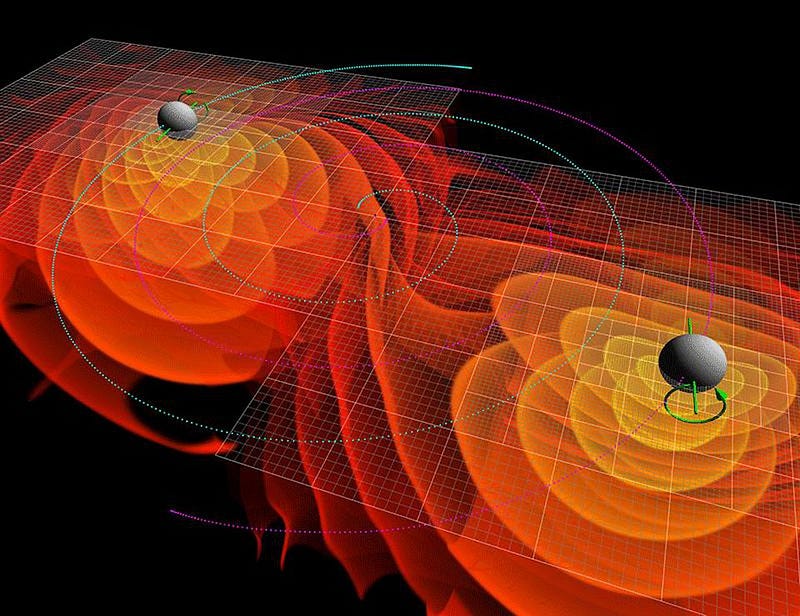
This is in stark contrast to the merger of pretty much every other class of astrophysical object. If two stars merge together, they will create a bright, flaring phenomenon known as a luminous red nova, owing to the interactions between the matter throughout the various layers of the two stars as they merge together. Two white dwarfs merging together will lead to an even more spectacular phenomenon: a type Ia supernova, where the subsequent runaway explosion will result in the destruction of both white dwarf progenitors.
And, as we first discovered in 2017, when two neutron stars merge together, they can create a kilonova event: a bright, violent gamma-ray burst that leads to the central creation of either a new neutron star or a black hole, while generating and ejecting a large amount of heavy elements back into the Universe.
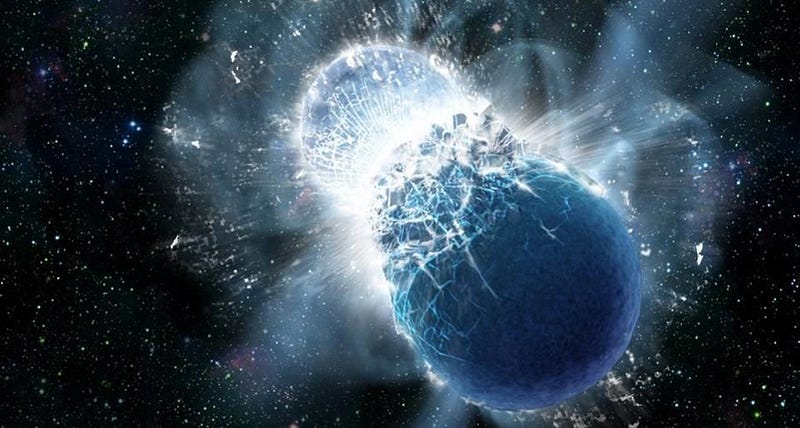
For black holes, however, this should not be the case. Once you rise above a specific critical mass threshold — somewhere between 2.5 and 2.75 solar masses — you can no longer have a dense, degenerate object made out of conventional particles. Anything that would have been a white dwarf or a neutron star can no longer exist; they must inevitably collapse to form a black hole instead.
White dwarfs are held up by the degeneracy pressure between electrons: the fact that no two identical fermions (one of the two classes of fundamental particle) can occupy the same quantum state. Neutron stars are held up by that same phenomenon but between neutrons: they cannot occupy the same quantum state either. When the matter composing these objects gets too dense, it triggers a set of nuclear reactions, which produce the electromagnetic radiation (i.e., light) that we then observe.
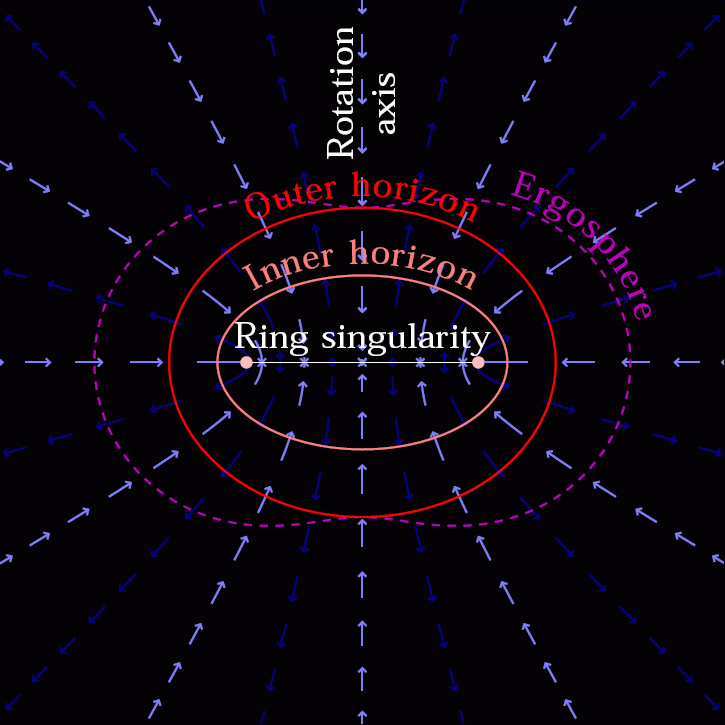
No such reactions are possible when two black holes merge. That’s because whatever internal structure they have — thought to be a point singularity for (unrealistic) non-rotating black holes and a circular ring singularity for (realistic) rotating ones — is hidden behind the event horizon. Nothing that crosses over to the inside of an event horizon can ever escape, so any reactions that occur interior to the event horizon will never get out.
In other words, even if there is an internal, non-trivial structure to black holes, anything that occurs upon a collision between two of them will never get out. There will never be particles, light, or any other signal emitted from their mergers that arise from anything occurring inside the event horizons.
The only hope we have of seeing everything must come from interactions external to the event horizon itself.
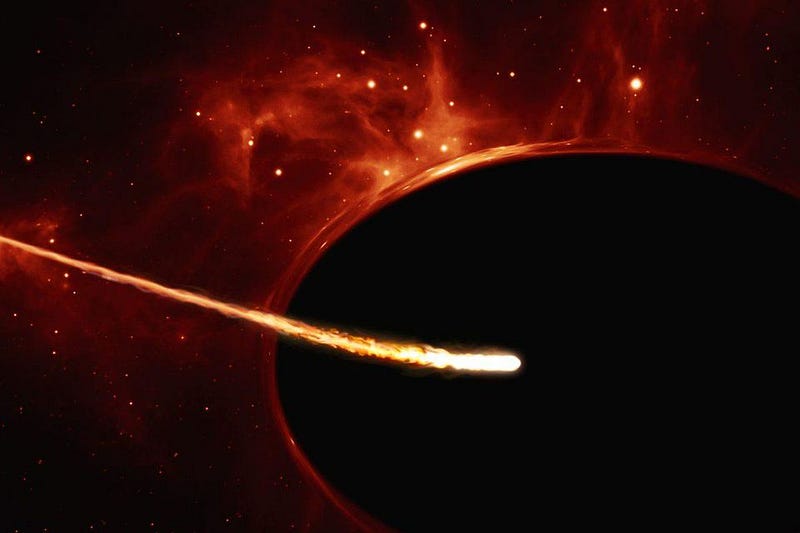
This is the only plausible mechanism by which merging black holes can generate an electromagnetic (light-based) signal: if the matter surrounding them interacts during the end-stages of the merger process. There are plenty of known examples in astronomy where matter interacts with black holes to produce light:
- during tidal disruption events, where a star gets torn apart passing close to a black hole,
- in X-ray binaries, where a giant star has mass siphoned onto its orbiting black hole companion,
- in an active galaxy or quasar, where accreted material flows into and around the black hole,
and so on. In all of these cases, it’s not that material from inside the event horizon is getting out; it’s that material from outside the black hole is interacting with the external environment, emitting light in the process.
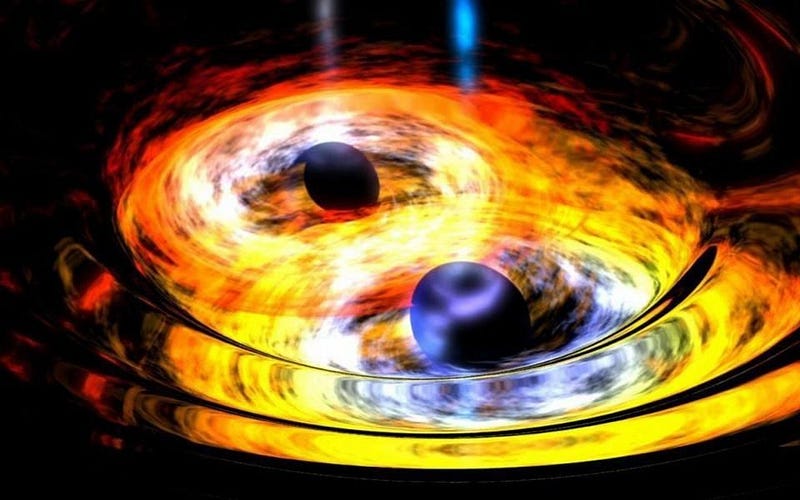
So what could be happening to cause the emission of light when two black holes inspiral and eventually merge? It can only be due to the presence of matter outside the event horizons of both black holes. Even though most models of black hole environments predict only very small amounts of energy transfer to the surrounding material during a merger, it is possible — at least in some extreme cases — that black hole-black hole mergers could create a light-emitting event.
For the very first black hole-black hole merger seen by LIGO, the signal that arrived at NASA’s Fermi telescope was weak and arrived without directional information. It was only a 2.9-sigma signal: potentially a false positive detection; the 0.22% odds of a “false alarm” are very high by physics standards. The gamma-ray burst candidate occurred when the detector was poorly-oriented with respect to the event, and ESA’s complementary INTEGRAL satellite saw no signs of any high-energy emission.

Of the dozens of black hole-black hole mergers that have subsequently been detected, NASA’s Fermi has seen exactly zero signs of another gamma-ray burst candidate. Perhaps it was simply an unrelated coincidence, after all.
Until, that is, May 21, 2019. On that date, the LIGO superevent database recorded a whopping three candidate events, including one that was initially reported as being a likely black hole-black hole merger with 97% probability. Its signal was seen in all three operational detectors: LIGO Livingston, LIGO Hanford, and Virgo. It was localized to a quite narrow region of space (just ~2% of the sky with 90% confidence), and appears to be both very massive (around 150 solar masses total) and very distant (perhaps 10–15 billion light-years away) compared to the more typical black hole-black hole mergers we’ve seen.
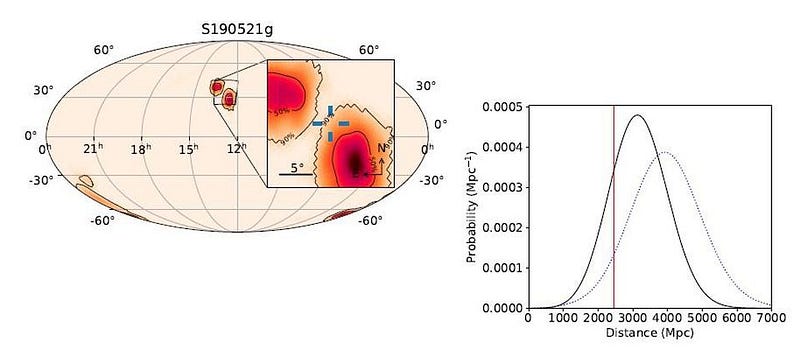
But the biggest news about it is that the Zwicky Transient Facility appears to have detected a brief electromagnetic flare that is coincident in both time and space with what our gravitational wave detectors saw. What’s very exciting is that, within that ~2% region of sky, they found, identified, and measured the source of the transient emission, and found a spectacularly possible culprit: an active galactic nucleus. It was chugging along like normal, and brightened suspiciously in the days following the gravitational wave event, slowly fading away over the course of a month.
The best-fit scientific explanation is this: the black hole-black hole merger could have occurred in the central, gas-rich region of a galaxy whose supermassive black hole is currently feeding on matter. The flare was likely powered by an accretion tail, and was visible in the optical part of the spectrum: the first and only black hole-black hole merger to have an optical counterpart so far. Its color is relatively constant, and it should be among the brightest signals that merging black hole can produce: large masses, relatively low-speed kicks, in dense gas environments.
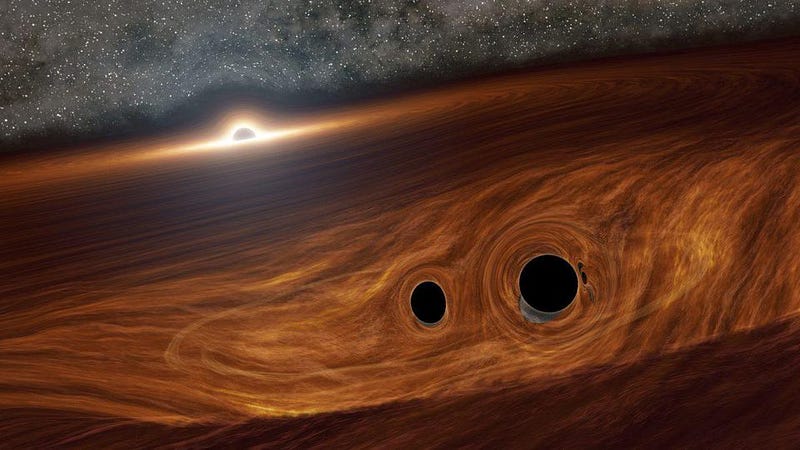
While hopes were initially high that merging black holes might produce light signals, that enthusiasm faded over recent years as merger after merger failed to turn up any signal at all. With this new event, excitement is now rekindled: perhaps black holes only need the right circumstances to flare when they merge, and that future observations will ultimately reveal the link between merging black holes and the emission of light.
As Dr. Eric Burns — who worked on the 2015 detection as part of the NASA Fermi team — put it:
If true this would give us another type of joint GW-EM detections, which could be detected much further into the universe and still enable a wealth of multimessenger science. I think this work, GW150914-GBM, and similar observational investigations are important to ensure our expectations stand up to reality. Future studies should resolve this question in the next few years.
The future of merging black holes has, quite literally, never been so bright.
Ethan Siegel is the author of Beyond the Galaxy and Treknology. You can pre-order his third book, currently in development: the Encyclopaedia Cosmologica.





